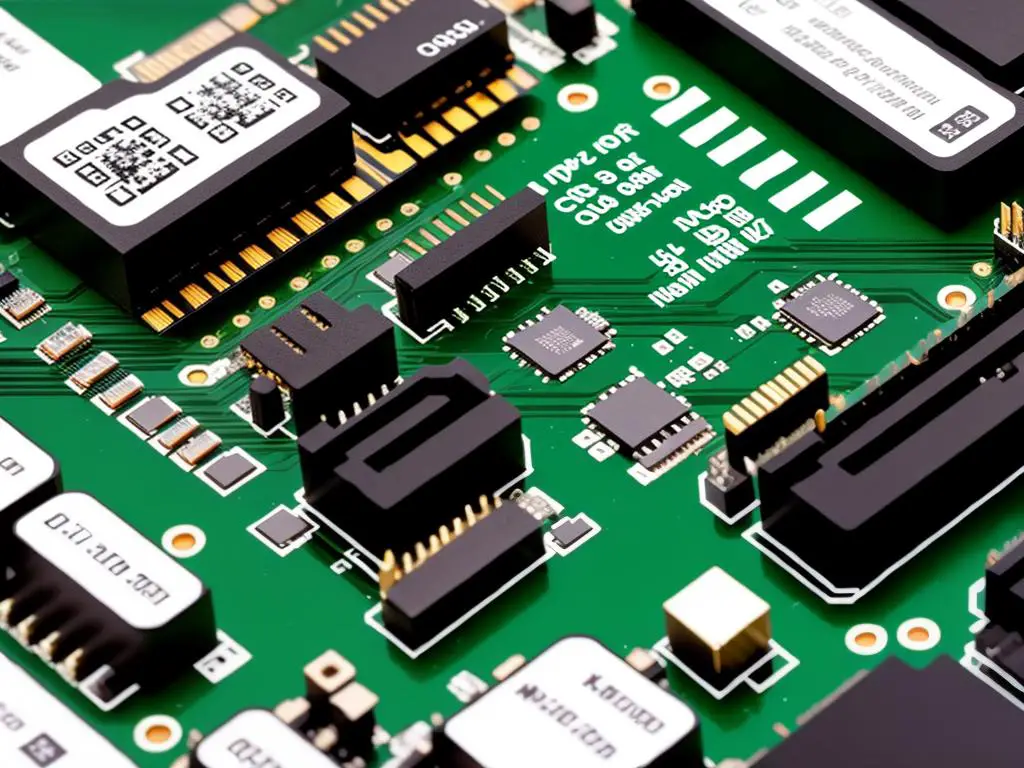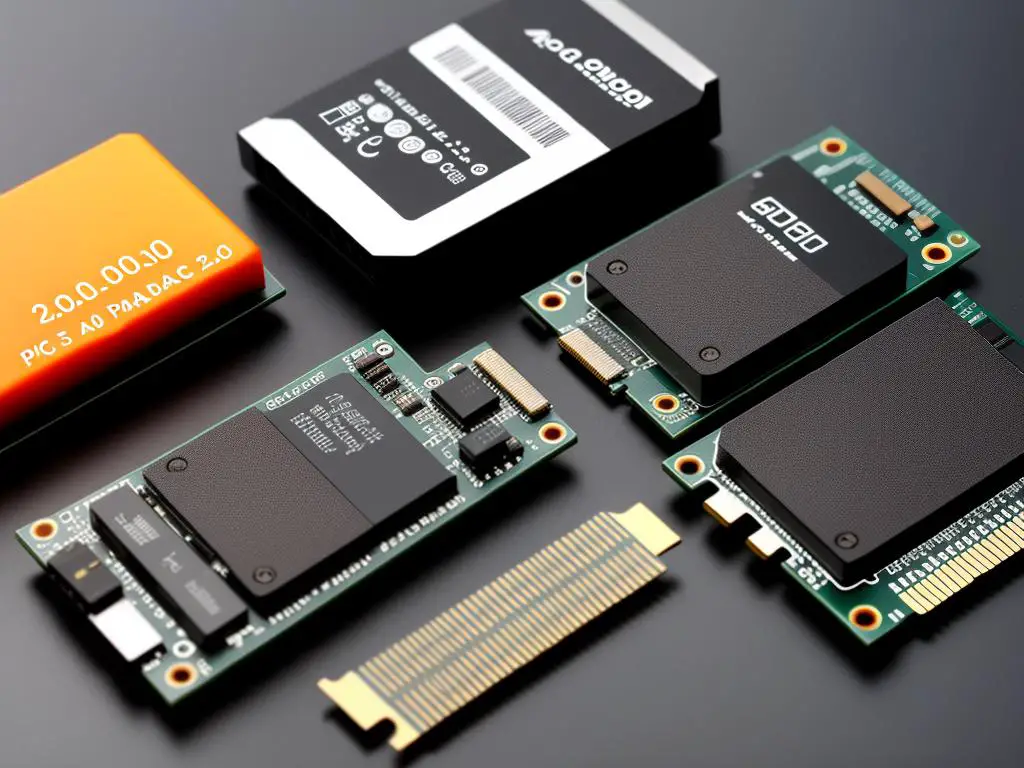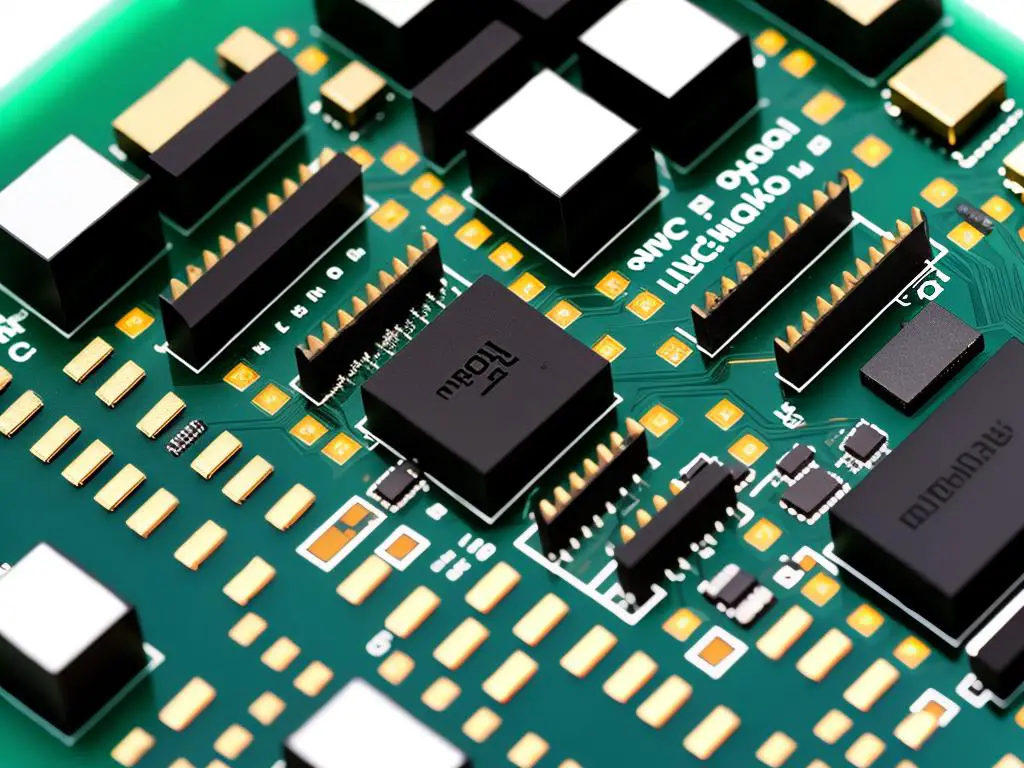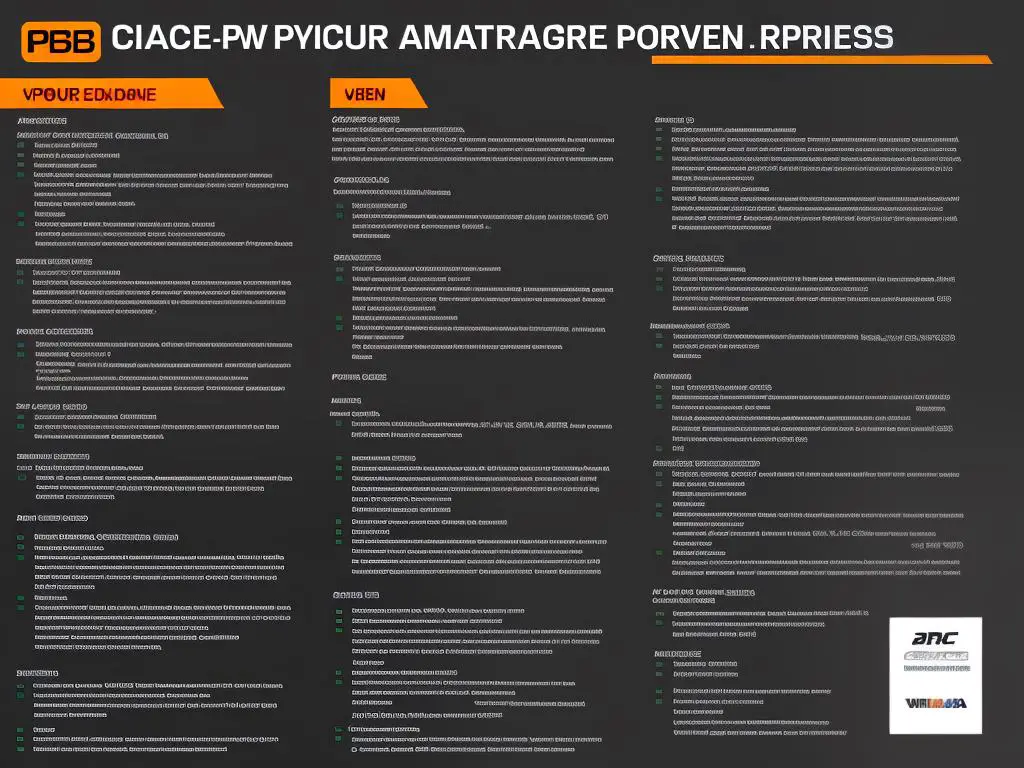In the realm of computer processor architecture and design, the evolution from PCI Express 2.0 to 3.0 has had significant impacts on overall system performance. While both versions play a crucial role in connecting the central processing unit to other hardware devices, each carries its unique specifications and capabilities that have shaped the functionality and efficiency of computer systems. The journey from fundamental concepts of PCI Express to delving deeply into the specifics of versions 2.0 and 3.0 provides insightful revelations about these technologies’ functionalities. As we navigate through the underlying properties and explore the comparative analysis of PCI Express 2.0 vs 3.0, the nuanced differences will be unveiled, shedding light on their roles, advancements, and impacts on technology usage.
Fundamental Concepts of PCI Express
Understanding PCI Express 2.0
PCI Express 2.0, also referred to as PCIe 2.0, was introduced in January 2007. It brought about significant improvements in performance compared to its predecessor, PCI-Express 1.x. PCIe 2.0 doubled the maximum theoretical bandwidth of its predecessor, achieving a total aggregated bandwidth of up to 8 gigabytes per second (GB/s) in a x16 configuration.
The encoding scheme utilized by PCIe 2.0 is 8b/10b, which essentially means that for every 8 bits of data, 2 extra bits are added for error checking. Each PCIe 2.0 lane provides a raw data rate of 5 gigatransfers per second (GT/s), but due to the 8b/10b encoding scheme, the effective data rate is 4 gigabits per second (Gb/s) per lane.
Introduction to PCI Express 3.0
PCI Express 3.0, also known as PCIe 3.0, was launched in November 2010. It carried forward the trend of doubling bandwidth, offering twice the bandwidth of PCIe 2.0. It also made some significant strides in terms of efficiency and cost-effectiveness by changing the encoding scheme adopted in previous versions.
The most important improvement of PCIe 3.0 was the adoption of the 128b/130b encoding scheme. This method only added two extra bits for error checking for every 128 bits of data. This enhanced the efficiency of the lane bandwidth utilization and improved the effective transfer rate to approximately 7.88 Gb/s per lane for an overall aggregated bandwidth of 31.5 GB/s in a x16 configuration.
Differentiating Between PCI Express 2.0 and 3.0
The key observed difference between PCI Express 2.0 and 3.0 is the bandwidth – PCIe 3.0 offers twice the bandwidth of PCIe 2.0. This was made possible by the change in encoding scheme from the less-efficient 8b/10b of PCIe 2.0 to 128b/130b in PCIe 3.0.
Further, while PCIe 2.0 achieves an effective data rate of 4 Gb/s per lane, PCIe 3.0 raises the bar with approximately 7.88 Gb/s per lane. Thus, there’s a significant performance leap when you transition from PCIe 2.0 to PCIe 3.0.
Backward and Forward Compatibility of PCI Express Versions
Another crucial factor to remember is both PCIe 2.0 and 3.0 ensure backward and forward compatibility. This means a PCIe 3.0 card can fit into a PCIe 2.0 slot and function properly, although it would only perform to the maximum capability of the PCIe 2.0 bandwidth. Similarly, a PCIe 2.0 card can fit in a PCIe 3.0 slot and work, but it won’t be able to make use of the additional bandwidth provided by PCIe 3.0.
Understanding the Differences Between PCI Express 2.0 and 3.0
At their cores, the distinctions between PCIe 2.0 and PCIe 3.0 hinge on their performance capabilities and encoding schema. Both iterations contribute distinctly unique advances to the progression of PCI Express, but PCIe 3.0 is particularly noted for its enhancement in bandwidth and efficiency. Grasping these nuances is essential when comparing the potential impacts of different components or evaluating overall system performance.

Diving Deep Into PCI Express 2.0
Timeline of Release and Enhancements Over Previous Version
Known in the industry as a high-speed serial computer expansion bus standard, the Peripheral Component Interconnect Express (PCIe) has seen several iterations. The release of the PCIe 2.0 variant in 2007, successor to the first generation PCIe 1.0a/1.1, resulted in multiple substantial enhancements over the earlier versions. This evolution contributed greatly to PCIe 2.0’s broad implementation across varied technological applications.
By doubling the data rate of the 1.0a/1.1 version, PCIe 2.0 achieved an impressive transmission speed of 5 GT/s. This version also welcomed a newly designed encoding scheme, the 8b/10b, which significantly ameliorated effective bandwidth capabilities. Further contributing to its versatility, PCIe 2.0 pioneered technology scalability by making available diverse lane configurations, such as x1, x4, x8, and x16.
Distinctive Features and Real-World Capacities
PCIe 2.0 came with a notable feature: the ability to initiate transactions, known as Transaction Layer Packets (TLPs), or to complete transactions already initiated. PCIe 2.0 also introduced flexibility and versatility to the previously rigid and simple PCIe, allowing for various interconnections: one device to multiple devices, multiple devices to one device, and several devices looped together.
Implementing the 8b/10b encoding scheme means that for every 8 bits of data, 10 bits are transmitted. This amounts to an overhead of 20%, leading to a real-world capacity of 4 GB/s in each direction in an x16 configuration.
Limitations
Despite the numerous benefits of PCIe 2.0, it also came with its fair share of limitations. The principal downside pertained to its bandwidth. Each lane offered a raw bandwidth of 500 MB/s, which was insufficient for high-performance GPUs (Graphical Processing Units) and SSDs (Solid State Drives). These devices required multiple 2.0 lanes to reach optimal performance, which in some situations was neither sustainable nor pragmatic.
Furthermore, PCIe 2.0 was limited by its power delivery, providing up to 75W at maximum. This constrained the deployment of high-performance devices, which required more power to perform optimally.
The Advent of PCIe 3.0 and its Comparison to 2.0
PCIe 3.0 came into the market four years later in 2011, offering double the bandwidth of PCIe 2.0, reaching 8 GT/s. It altered the encoding scheme from 8b/10b to a more efficient 128b/130b, reducing the overhead from 20% to a mere 1.54%. Consequently, a x16 configuration could achieve a throughput of 15.75 GB/s, nearly double that of PCIe 2.0.
The increased bandwidth made PCIe 3.0 more suitable for high-performance GPUs and SSDs, reducing their reliance on multiple lanes. The new standard also maintained backward compatibility, allowing devices designed for previous PCIe generations to connect via PCIe 3.0.
Finally, PCIe 3.0 addressed the power delivery limitations of its predecessor by introducing an additional power connector. This enhancement enabled PCIe 3.0 to power high-performance devices adequately and ensure optimal performance.
Summarizing the Evolution of PCIe
The development of PCIe 2.0 marked a milestone in computer bus standard evolutions, with a doubled data rate over its predecessor and the introduction of the 8b/10b encoding scheme. However, the advent of PCIe 3.0 took this technology a step further, bringing forth not just double the bandwidth of PCIe 2.0, but also an exponentially more efficient encoding method and improved power delivery capabilities.

Exploring the Intricacies of PCI Express 3.0
Diving Deeper into PCIe 3.0
Launched in 2010, PCIe 3.0 at once succeeded and surpassed PCIe 2.0. This third generation of the PCI Express bus standard brought along several crucial advancements with the most notable being a massive increase in bandwidth per lane. In contrast to PCIe 2.0 that delivered 500 MB/s per lane, PCIe 3.0 transfixed the tech world by providing a whopping 1 GB/s per direction, resulting in substantial improvements in speed.
This jump in lane speed can be largely attributed to a switch in encoding schemes. Where PCIe 2.0 utilized an 8b/10b encoding scheme with a 20% overhead, PCIe 3.0 applied a drastically more efficient 128b/130b scheme, trimming the overhead down to a mere 1.54%. This more efficient coding, in turn, paved the way for enhanced data throughput, thereby propelling PCIe 3.0’s superior performance.
Enhanced Performance and Efficiency
PCIe 3.0’s additional bandwidth directly relates to increased performance and efficiency, making it more suitable for applications requiring high data transfer speeds. These include graphics processing units (GPUs), solid-state drives (SSDs), and high-speed networking interfaces. The increased throughput allows these components to operate more quickly and effectively, providing a smoother, higher-performing computing experience.
In certain scenarios, the increased bandwidth of PCIe 3.0 can be exploited to significantly boost overall system performance. For example, in multi-GPU setups for high-end gaming or scientific calculations, PCIe 3.0 can allow for better communication between the cards and the rest of the system, improving performance.
Practical Implementation
While the extra bandwidth offered by PCIe 3.0 is a major advantage, it’s important to note that not all devices can benefit from it immediately. Some components, such as low-end GPUs or older SSDs, may not be able to fully utilize the extra bandwidth. However, as technology continues to advance, more and more hardware will be able to take full advantage of PCIe 3.0’s capabilities.
As an example, many modern SSDs are designed with PCIe 3.0 in mind. These drives can significantly outpace traditional SATA drives when connected via PCIe 3.0, so users who deal with large amounts of data or need high-speed storage for tasks like video editing or game loading can benefit from these advanced SSDs.
Final Thoughts
To conclude, PCI Express 3.0 presents a significant enhancement when contrasted to PCI Express 2.0, with its doubled bandwidth capacity and considerably more effective coding method. Although not all components will maximize the utilization of the expanded bandwidth, those that do – such as modern SSDs and high-performance GPUs – can noticeably enhance their functioning. As technological progress persists, the advantages of PCIe 3.0 will become increasingly clear, solidifying its place as a crucial feature of contemporary high-performance computing systems.

Comparative Analysis: PCI Express 2.0 vs 3.0
PCI Express 2.0 Vs 3.0: Detailed Comparison
The following section provides a thorough comparison of PCI Express versions 2.0 and 3.0, focusing on various aspects such as data transfer rate, bandwidth, scalability, power efficiency, and backward compatibility. Through this comparative analysis, we aim to clarify the distinctive performance features and benefits of the two versions.
Bandwidth
The most remarkable difference between PCI Express 2.0 and 3.0 is the bandwidth availability. The total bandwidth available for PCI Express 2.0 is 5 GT/s (Gigatransfers per second), whereas PCI Express 3.0 offers a substantial step up to 8 GT/s. This variation in bandwidth is instrumental in determining the data transfer speed – the more the bandwidth, the faster the speed.
Data Rate
A further differentiating factor between these two versions of PCI Express is the data rate. PCI Express 2.0 supports a data rate of approximately 500 MB/s per lane (with 16 lanes, that’s an aggregate of around 8 GB/s). On the other hand, PCI Express 3.0, due to its enhanced bandwidth, allows for a remarkable data rate of approximately 1GB/s per lane (at 16 lanes, that’s a whopping 16 GB/s), thereby ensuring more efficient processing.
Scalability
In the context of scalability, PCI Express 3.0 once again triumphs over its predecessor. Its architecture allows for a higher number of lanes, which can be as many as 32. More lanes equate to an increased data path size which, in turn, translates to more data transfers per clock cycle. This scalability feature is less flexible in the 2.0 version, where the maximum number of lanes that can be accommodated is 16.
Performance
Performance is tied strongly to bandwidth and data rate capabilities. Given that PCI Express 3.0 provides improved bandwidth and data rate, it unquestionably delivers superior performance over PCI Express 2.0. Given these enhancements, tasks that need a high level of data processing and transfer, like graphic-intensive gaming or video rendering, will practically see a noticeable increase in performance.
Power Efficiency
PCI Express 3.0 offers better power efficiency as compared to version 2.0. It leverages its technology improvements to offer a low power idle state, but still supports a higher rate of data transfer. The improved power management system in version 3.0 contributes to its overall power saving capabilities.
Backward Compatibility
Both, PCI Express 2.0 and 3.0, are backward compatible. This means that a PCI Express 3.0 card can fit into a PCI Express 2.0 slot and vice versa. However, it should be noted that, even though the hardware is compatible, the PCI Express 3.0 card will operate according to the bandwidth and performance capabilities of PCI Express 2.0 if slotted in a 2.0 slot.
In conclusion, while both have their own merits, PCI Express 3.0 clearly brings significant improvements to the table in terms of performance, bandwidth, data rate, scalability, and power efficiency. However, considerations like whether your system’s motherboard supports the 3.0 version, the type of applications you run, and your optimization needs should drive the choice between the two.

Understanding the differences between PCI Express 2.0 and 3.0 heralds the continuous technological evolution in computer processor design, leading to increased capabilities and performance. In exploring the key facets of each version – from bandwidth and data rate to scalability and power efficiency – a clear picture emerges of the progress and constant innovation inherent in this field. And while the decision between PCI Express 2.0 and 3.0 will always be contingent on specific use scenarios and technological needs, the knowledge and clarity achieved through this exploration provide a firm foundation for informed decision-making in the dynamic world of computer hardware technology.
